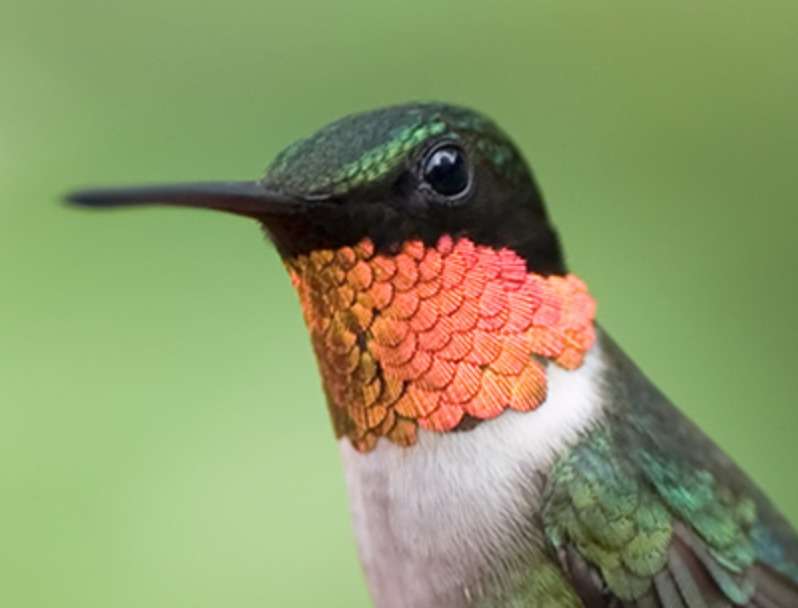Out In The Woods
- April 7th 2024
- Out in the Woods

Ruby-throated hummingbird caught in a rare moment of repose
Buzzing Hummingbirds Can Fend Off Larger Intruders
Photo: Rick from Georgia via Creative Commons
Kevin McKeon, Mousam Way Land Trust Director
The Ruby-throated Hummingbird is eastern North America’s sole breeding hummingbird and is viciously territorial. I once spotted one at our feeder with the beak of another in its breast. Another one of our visitors flew at 30 mph, with 50 wingbeats a second, fending off all comers to any of our three feeders and our flowers, guarding them while perched upon our garden arbor. They’ll dive-bomb intruders at 60 mph—amazing!
Hummers display exquisite control—the only birds able to fly backwards—stopping in an instant, hovering while adjusting up and down as they visit our feeders and flowers, and forage for insects. A favorite stop are spiders’ webs, eating both the spiders and their webbed-trapped prey. Hummingbird feeders are generally safe for hummingbirds, but they can create a problem if they make the birds easy targets for cats or if the feeders are placed around nearby windows that the birds might fly into. Also, use one-quarter cup of white sugar in one cup of water, with no red dye. Audubon instructions on feeding are here – https://www.audubon.org/news/hummingbird-feeding-faqs
Males woo females that enter their territory, making a looping, U-shaped dive starting from as high as 50 feet above the female, shifting to making fast side-to-side flights while facing her. It takes about a week to build a two-inch nest directly on top of a branch, 10-40 feet high, made of dandelion down held together with strands of spider silk and pine resin, and camouflaged with lichen and moss. The female stamps on the base of the nest to stiffen it, but the walls remain pliable, pressing and smoothing it between her neck and chest. Two to three eggs will take about two weeks to hatch and three weeks later, the chicks will leave.
Many critters eat these little hummers, even some insect-eating birds, but they need to be quick to nab these speedy flyers, and very few can catch an accomplished acrobatic adult. Hawks, patient lizards, stealthy snakes, even praying mantises will grab them during their daily dormant period called torpor. https://www.youtube.com/watch?v=-GzpPX4c2hk. Nests get raided by large spiders, dragonflies, birds, bats, and squirrels.
Hummingbirds are Apodiformes, meaning “without feet,” an apt description, since their short feet prevent hopping or walking, but they can stretch and scratch their heads and shuffle along a perch. They lap up nectar by flicking their long, forked, brushy tongue deep within a flower at rates up to ten times per second, inadvertently collecting pollen on their feathers and bill before darting off to their next meal, thus pollinating with the efficiency of a honeybee. Weighing less than a nickel and living about eight years, their yearly migration takes them as far as Central America, with some summering in eastern Canada, and others flying 500 miles non-stop across the Gulf of Mexico.
After their long flight to their summer homes, consider welcoming them to your backyards with some needed nutritious sweet water. The reward is watching their acrobatic antics!






